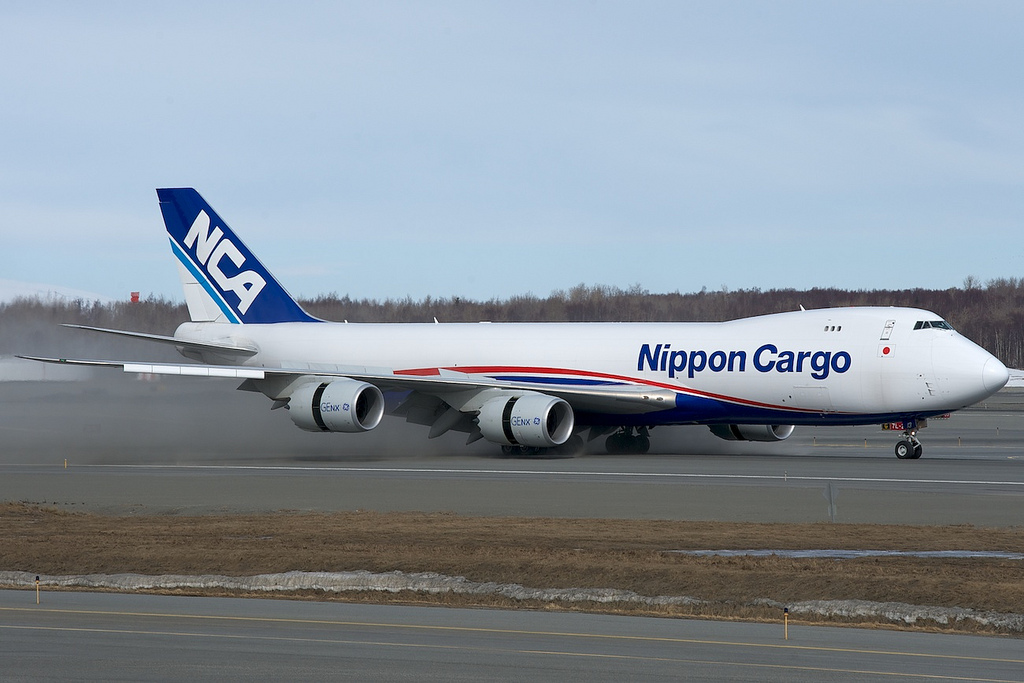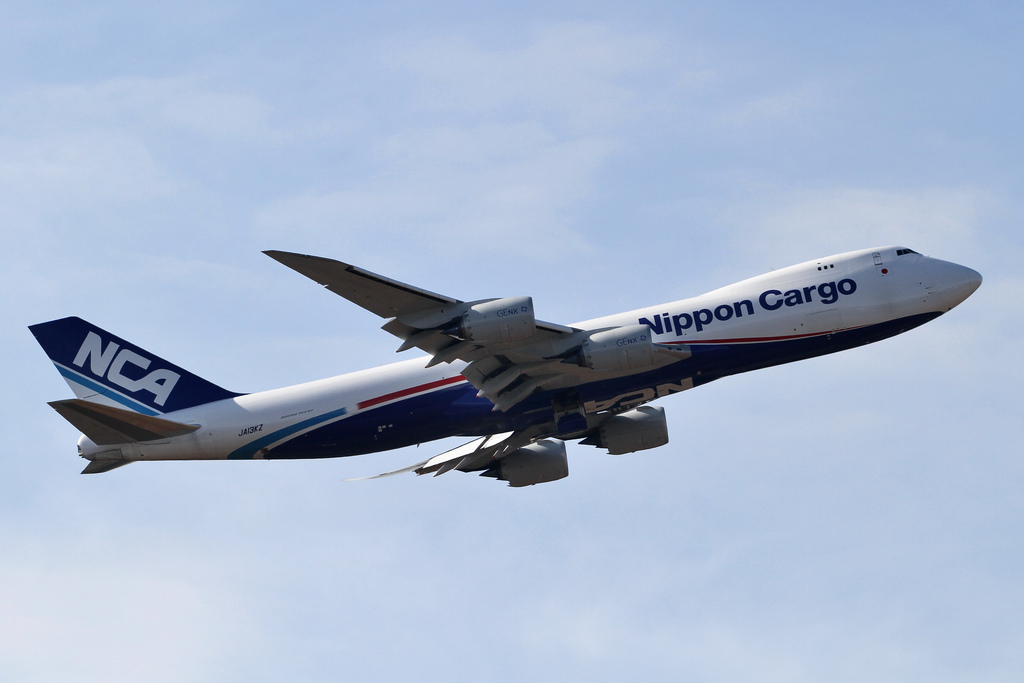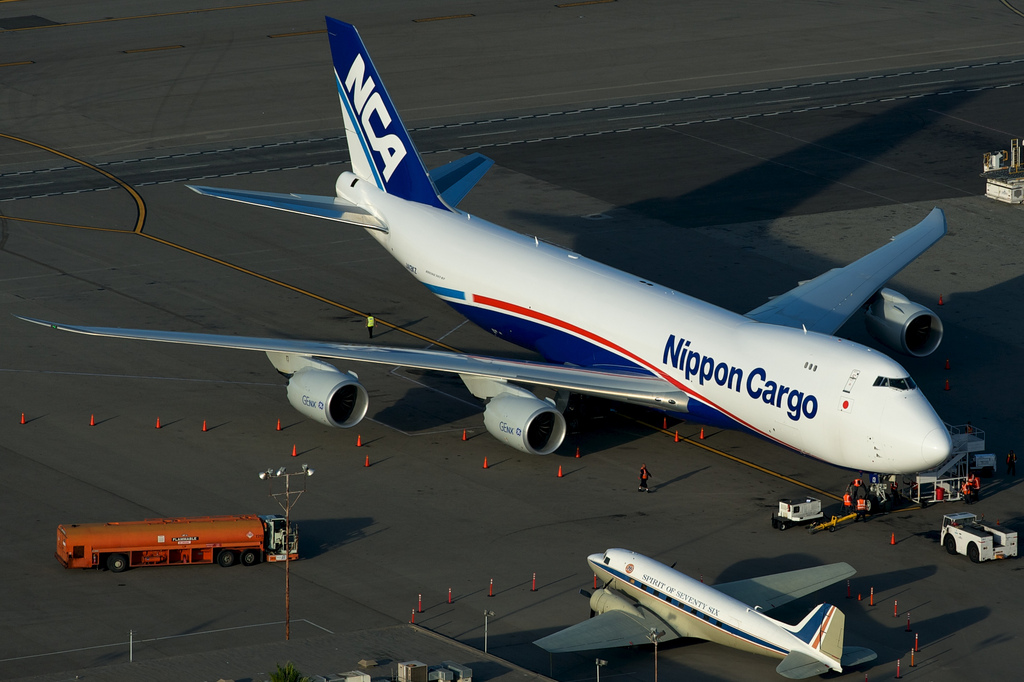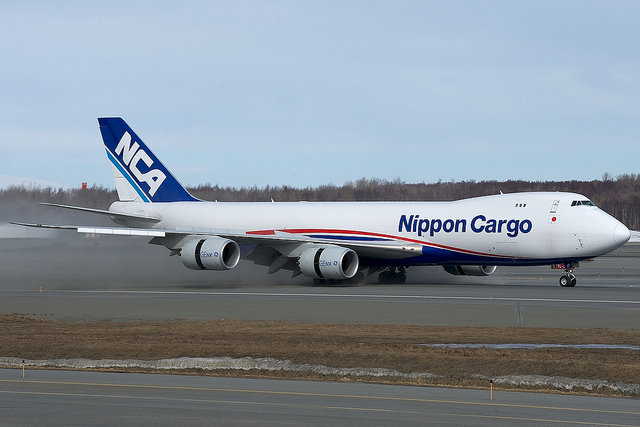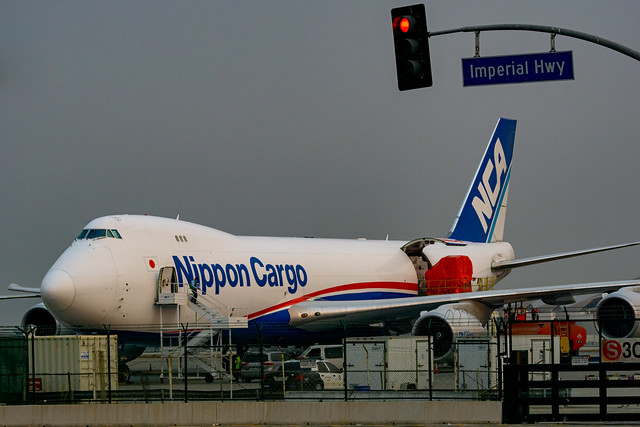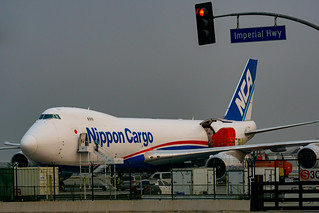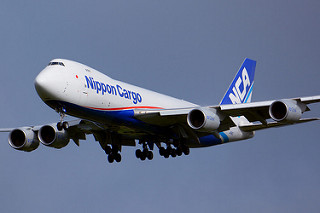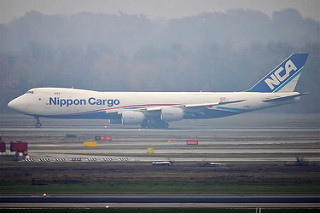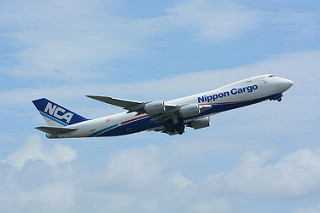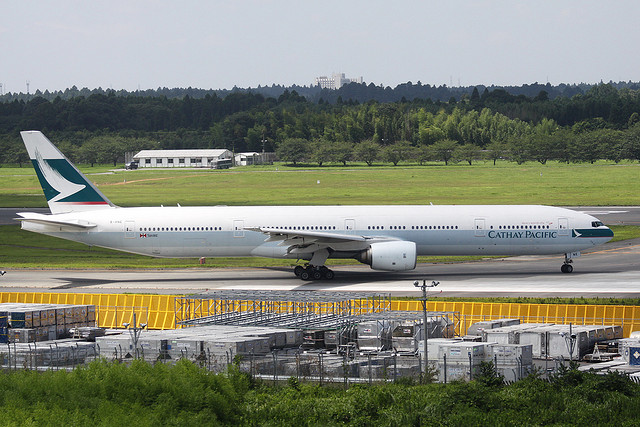Nippon Cargo B748 at Tokyo on Feb 1st 2021, tailscrape
Last Update: September 15, 2023 / 16:26:25 GMT/Zulu time
Incident Facts
Date of incident
Feb 1, 2021
Classification
Accident
Airline
Nippon Cargo Airlines
Flight number
KZ-258
Departure
Hong Kong, Hong Kong
Destination
Tokyo Narita, Japan
Aircraft Registration
JA13KZ
Aircraft Type
Boeing 747-8
ICAO Type Designator
B748
A post flight inspection found scrape marks of about 90cm (35 inches) width and 3 meters (118 inches) length at the bottom of the aft fuselage. A runway inspection at Narita Airport found no anomaly.
The airline reported the aircraft went around at Narita due to a strong wind gust. An inspection of the aircraft in Hong Kong had not found any anomaly on the airframe, hence the damage must have happened on the flight to Tokyo, presumably during go-around in Narita.
Japan's Transport Ministry reported the occurrence was initially rated a serious incident (with the possibility of an accident rating should additional damage be found during closer examination) and is going to be investigated by Japan's Transportation Safetly Board (JTSB), who have dispatched investigators on site. Following landing scrape marks of 90cm width and 3 meters length were discovered. A runway inspection at Narita Airport found no anomalies on the runway.
On Feb 8th 2021 the JTSB reported the aircraft had departed Hong Kong at 15:35 (Japan time), made a first approach to Narita Airport's runway A at 18:51L in turbulent airflow and finally landed on Narita's runway A at 19:09L. Following the landing scratches were found on the underside of the fuselage.
On Sep 15th 2023 the JTSB released their final report concluding the probable causes of the accident were:
The JTSB concludes that the probable cause of this accident was that when the Aircraft made a go-around while becoming unstable attitude after touching down and bouncing, the pitch angle became excessively large with an inadequate aircraft speed, which more likely resulted in the lower aft fuselage contacting with the runway.
The Aircraft bounced after the touchdown is because it was likely insufficient to deal with the crosswind.
The pitch angle became excessively large with an inadequate aircraft speed is probably because the PIC reflexively moved the reverse thrust levers after the touchdown, therefore, in the situation where it took time for the aircraft speed to increase due to the go-around operation, while being anxious about the runway-remaining length and others and trying to get off the ground as quickly as possible, the PIC performed the nose-up operation without checking the aircraft speed.
The JTSB analysed:
(1) Meteorological Conditions
The JTSB concludes that according to the wind conditions recorded on the FDR and the statements of flight crew members, there was most likely a strong crosswind at 500 ft and below, and likely have been subject to airflow turbulence.
The flight crew members should have considered the responses (go-around) to turbulence including crosswinds and shared them among flight crew members at approach briefing and others because the crosswind speed exceeded 20 kt in the air, although the reported wind speed on the ground was less than 5kt.
(2) Situation upon approach status and decision on landing
The JTSB concludes that based on the records on FDR and QAR, the Aircraft certainly made a stable approach up until the autopilot was disengaged.
The PIC disengaged the autopilot at an altitude of 460 ft (RA 352 ft). As the autopilot was disengaged, the Runway Alignment Mode was released. And the rudder, which had previously been turned to the left, returned to the neutral position (trim position), and the heading of the Aircraft started to turn to the windward side. It is probable that as the PIC was unable to deal with the Aircraft’s movement, the Aircraft began to veer to the right and deviated to the right from the runway centerline, It is probable that the PIC was unable to perform an appropriate operation because the PIC had not been able to recognize the disengagement of the autopilot at low altitudes as threat.
After that the PIC deactivated the auto-throttle to increase the thrust. Due to the thrust increase, the pitch angle increased, which more likely resulted in the Aircraft deviation from the GS on-glidepath.
The quantity of deviation from the GS on-glidepath exceeded the criteria for the stabilized approach specified by the Company, but the PIC more likely continued approaching judging that corrections should be possible. It is probable that the deviation from the LOC on-course was corrected by the rudder operations made by the PIC immediately before the touchdown, but the Aircraft was unable to maintain a stabilized approach, therefore the PIC should have executed a go-around earlier. In addition, when the quantity of deviation from the GS on-glidepath and the V/S exceeded the criteria specified by the Company, the FO should have called out to caution the PIC to execute a go-around immediately.
(3) Situation at the time of touchdown
The JTSB concludes that while taking a roll angle of 4.2° right, the Aircraft touched down on the right main landing gear first with a HDG of 6.0° right from the runway magnetic bearing. After the touchdown, the PIC applied the left rudder pedal in order to adjust the Aircraft’s HDG to the runway magnetic bearing. The left body gear touched down but bounced, thus, the left wing gear did not touch down. At this time, probably the PIC was required to reduce the roll speed to the left by applying the ailerons to lower the right wing against the crosswind from the right. The speedbrakes were extended but soon retracted.
Three seconds after the touchdown, all main gears touched down and all speedbrakes started to deploy. It is probable that the PIC listened to the FO’s call “SPEEDBRAKES UP” and reflexively moved the reverse thrust levers. As the reverse thrust levers were moved, the thrust reverser was actuated, and the FO called “REVERSERS”, which was believed to be probably an attempt for the FO to say “REVERSERS NORMAL” that is the call to be made when the thrust reversers are actuated. However, the PIC and the FO did not remember having actuated the thrust reversers. It is probable that the PIC and the FO did not remember having actuated the thrust reversers is because both the PIC’s operation and the FO’s call were reflexive responses, and because they were distracted by the change in movement of the Aircraft as the Aircraft movement was unstable after landing.
The reverse thrust levers should be operated after not confirming the touchdown with only one element (for example, call, “SPEEDBRAKES UP”, etc.) but consciously confirming the secure touchdown of the main landing gears and the operation of the autobrakes.
It is probable that the pitch angle, which had been temporarily reduced to 1.4°, started to increase to the direction of nose up due to the effect of nose-up force generated by the speedbrakes starting to be deployed.
(4) The PIC's decision to execute a go-around
The JTSB concludes that after the touchdown, the Aircraft repeated bouncing with unstable attitude, and the PIC more likely decided to execute a go-around as feeling the Aircraft floating according to the increase in pitch angle to the direction of nose up.
However, when the PIC decided to execute a go-around, the thrust reversers had been already actuated, which would go against the rules in the AOM, therefore, the go-around from this phase was probably inappropriate. The PIC should have made the landing roll while maintaining the direction after lowering its nose and letting the nose gear touch down early, and made a full stop.
The decision on go-around should be made after Accurately grasping the condition of the aircraft.
(5) Operation of go-around
The JTSB concludes that the PIC called “GO AROUND (GA)”, then moved the reverse thrust levers to down position and the forward thrust levers to the maximum amount of control input, and initiated a go-around, however, as the PIC had already actuated the thrust reversers, the engine thrust did not increase until TCs were closed completely, which probably resulted in taking time for the speed to increase. When executing a go-around, as being anxious about the change in the Aircraft attitude and the runway-remaining-distance, the PIC was not looking at the Aircraft speed. It is probable that the PIC performed the operation to continue the excessive nose-up attitude while the Aircraft was unable to attain the speed required to be airborne.
The PIC performed the operation to continue the excessive nose-up attitude is more likely because the PIC judged the Aircraft became airborne, and tried to get off the ground as quickly as possible being afraid that the Aircraft would make a hard landing due to the effect of wind shear.
The reason why the PIC judged the Aircraft became airborne is because the Aircraft bounced, in addition, as it was at night, it was likely difficult to recognize the runway and its surrounding ground objects and determine altitude and attitude.
(6) The Aircraft condition at the time of go-around
The JTSB concludes that at the time of the go-around, PACS worked and provided nose-down elevator deflection to prevent a tail strike, but at 18:51:13, the pitch angle of the Aircraft was 9.8°, and at this time, the speed was 139 KIAS.
Furthermore, during the ground roll for the subsequent go-around, PACS worked and provided nose-down elevator deflection to prevent a tail strike, but in three seconds from 18:51:25, the pitch angle was 9.8°. The speed changed from 130 KIAS to 136 KIAS. When the Aircraft became airborne, the pitch angle was 10.2°, the bank angle 2.8° left, and the speed was 143 KIAS.
(7) Occurrence of a tail strike
It could not be determined when a tail strike occurred since any trace was not found on the runway, however, according to the analyzation with reference to the image recordings, the Aircraft condition (in 3.5 seconds, the pitch angle changed significantly from 1.4° to 9.8°, the speed was reduced up to 139 KIAS, the spoilers deployed, and PACS worked), and 2.6 (14), it most likely occurred at the time of the go-around (18:51:13).
Furthermore, the condition of the aircraft during the ground roll from 18:51:25 to 18:51:28 (pitch angle was 9.8° for 3 seconds, speed was low from 132 KIAS to 134 KIAS, and PACS worked) and during becoming airborne (18:51:31) (pitch angle was 10.2°, speed was 143 KIAS, bank angle was 2.8° to the left) were analyszed, it was likely that a tail strike may have occurred at that time as well.
(8) The Aircraft condition immediately after airborne
The JTSB concludes that immediately after lift-off, the stall warning system was activated for two seconds, which would be evidence that when lifting off, the Aircraft speed was close to the stall speeds, and the Aircraft was more likely in danger of stalling, however, this situation was avoided due to the assertion made by the FO.
Effective monitoring and cross-checking are very important because detecting errors and unsafe conditions would break the chain of events leading up to the accident.
(9) CRM/TEM education/training in the Company
The JTSB concludes that the Company has been more likely working on the CRM/TEM education/training for the flight crew members by regularly providing LOFT training and the classroom lectures in CRM/TEM training, which are conducted every fiscal year with skill themes. However, as described in 3 (2), when considering the pilot operations conducted by the PIC and the FO at the time of the occurrence of the accident, there was more likely room for improvement in their practice of CRM/TEM. It is important for the Company to try to ensure that the flight crew members have sufficient CRM/TEM skills by continuing and enhancing the CRM/TEM education/training for the flight crew members.
Metars Hong Kong:
VHHH 010800Z 26006KT 9999 FEW035 23/16 Q1017 BECMG 12005KT=
VHHH 010730Z 26007KT 9999 FEW035 23/16 Q1017 NOSIG=
VHHH 010700Z 26007KT 9999 FEW035 24/15 Q1017 NOSIG=
VHHH 010630Z 26008KT 9999 FEW035 23/15 Q1017 NOSIG=
VHHH 010600Z 26007KT 9999 FEW035 24/15 Q1017 NOSIG=
VHHH 010530Z 25007KT 220V280 9999 FEW035 24/15 Q1018 NOSIG=
VHHH 010500Z 26006KT 9999 FEW035 23/15 Q1019 NOSIG=
VHHH 010430Z 26007KT 9999 FEW030 23/15 Q1019 NOSIG=
VHHH 010400Z 26006KT 240V300 9999 FEW028 22/15 Q1020 NOSIG=
VHHH 010330Z 32005KT 290V350 9999 FEW028 22/15 Q1020 NOSIG=
VHHH 010300Z 33005KT 300V360 9999 FEW028 23/15 Q1021 NOSIG=
Metars Tokyo:
RJAA 011130Z 20011KT 9999 FEW030 11/06 Q1016 WS R16R NOSIG=
RJAA 011100Z 20014G24KT 9999 FEW030 11/05 Q1016 NOSIG=
RJAA 011030Z 18009KT 9999 FEW025 10/05 Q1017 WS R16R NOSIG=
RJAA 011000Z 21009KT 9999 FEW025 10/06 Q1017 NOSIG=
RJAA 010930Z 16006KT 140V200 9999 FEW020 SCT130 09/06 Q1018 NOSIG=
RJAA 010900Z 18002KT 9999 FEW020 SCT140 07/06 Q1018 NOSIG=
RJAA 010830Z 16004KT 9999 FEW020 08/07 Q1018 NOSIG=
RJAA 010800Z 19003KT 160V220 9999 FEW020 10/07 Q1018 NOSIG=
RJAA 010730Z 17006KT 140V210 9999 FEW020 11/07 Q1018 NOSIG=
RJAA 010700Z 16004KT 130V200 9999 FEW020 12/07 Q1018 NOSIG=
RJAA 010630Z 19005KT 150V230 9999 FEW020 12/07 Q1019 NOSIG=
RJAA 010600Z 18005KT 150V220 9999 VCSH FEW020 BKN040 11/06 Q1020 NOSIG=
Incident Facts
Date of incident
Feb 1, 2021
Classification
Accident
Airline
Nippon Cargo Airlines
Flight number
KZ-258
Departure
Hong Kong, Hong Kong
Destination
Tokyo Narita, Japan
Aircraft Registration
JA13KZ
Aircraft Type
Boeing 747-8
ICAO Type Designator
B748
This article is published under license from Avherald.com. © of text by Avherald.com.
Article source
You can read 2 more free articles without a subscription.
Subscribe now and continue reading without any limits!
Read unlimited articles and receive our daily update briefing. Gain better insights into what is happening in commercial aviation safety.
Send tip
Support AeroInside by sending a small tip amount.
Related articles
Nippon Cargo B748 near Whitehorse on May 23rd 2013, cargo smoke indication
A Nippon Cargo Airlines Boeing 747-800, registration JA13KZ performing freight flight KZ-159 from New York JFK,NY to Anchorage,AK (USA) with 5 crew,…
Nippon Cargo B748 at Amsterdam on Jan 9th 2023, gear problem
A Nippon Cargo Airlines Boeing 747-8 freighter, registration JA14KZ performing flight KZ-51 from Amsterdam (Netherlands) to Milan Malpensa (Italy),…
Nippon Cargo B748 at Tokyo on Feb 11th 2022, dropped flap fairing on landing
A Nippon Cargo Airlines Boeing 747-8, registration JA14KZ performing flight KZ-226 from Shanghai Pudong (China) to Tokyo Narita (Japan), landed on…
Nippon Cargo B748 at Hong Kong on Mar 29th 2018, engine fire on short final
A Nippon Cargo Airlines Boeing 747-800, registration JA18KZ performing flight KZ-5207 from Tokyo Narita (Japan) to Hong Kong (China) with 5 crew, was…
Nippon Cargo B748 at Tokyo on Mar 18th 2018, dropped panels in flight
A Nippon Cargo Airlines Boeing 747-800, registration JA11KZ performing flight KZ-89 (dep Mar 17th 2018) from Milan Malpensa (Italy) to Tokyo Narita…
Nippon Cargo B748 at Tokyo on Mar 16th 2018, dropped panel in flight
A Nippon Cargo Airlines Boeing 747-800, registration JA12KZ performing flight KZ-49 (dep Mar 15th) from Milan Malpensa (Italy) to Tokyo Narita…
Newest articles
Virgin Australia B738 near Hobart on Jul 21st 2025, fire in cabin
A Virgin Australia Boeing 737-800, registration VH-YFY performing flight VA-1528 from Sydney,NS to Hobart,TA (Australia), had been enroute at FL380…
Cathay Pacific B773 at Manila on Dec 16th 2025, runway incursion
A Cathay Pacific Boeing 777-300, registration B-HNE performing flight CX-918 from Manila (Philippines) to Hong Kong (China), was taxiing for…
Subscribe today
Are you researching aviation incidents? Get access to AeroInside Insights, unlimited read access and receive the daily newsletter.
Pick your plan and subscribePartner

ELITE Simulation Solutions is a leading global provider of Flight Simulation Training Devices, IFR training software as well as flight controls and related services. Find out more.
SafetyScan Pro provides streamlined access to thousands of aviation accident reports. Tailored for your safety management efforts. Book your demo today
AeroInside Blog
Popular aircraft
Airbus A320Boeing 737-800
Boeing 737-800 MAX
Popular airlines
American AirlinesUnited
Delta
Air Canada
Lufthansa
British Airways
